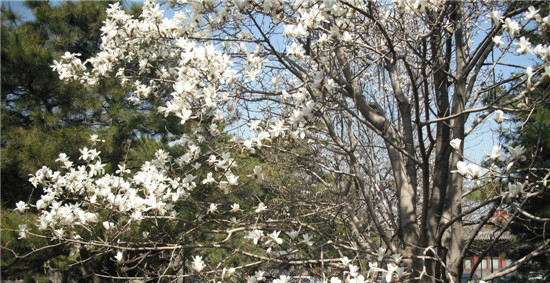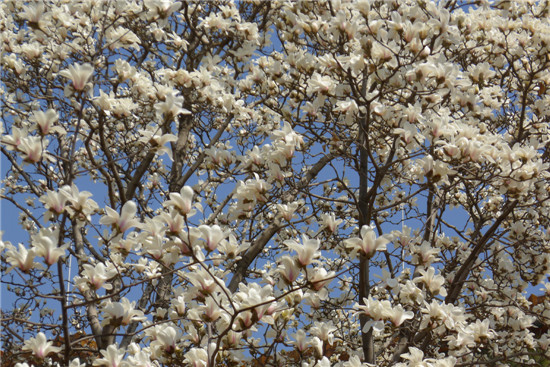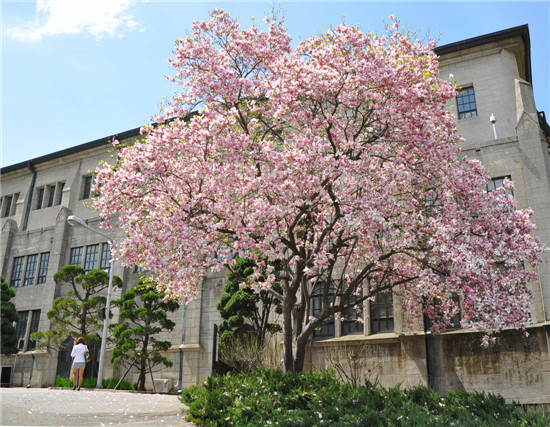Matters needing attention in the Culture of Magnolia
Magnolia tree is a tree species that we are very familiar with, whether it is its beautiful tree shape or huge and beautiful flowers are very attractive to us. So how much do you know about the planting precautions of Magnolia? Let's go and have a look.

Magnolia is a deciduous tree with a trunk height of about 25 meters. its crown is narrowly oval when it is young, and becomes broad or loose when it matures. The magnolia tree is relatively small, but it is full of flowers, enchanting and quaint. Magnolia tree is often used as an ornamental tree in tourist scenic spots to show the rough and simple style of the tree.
As a deciduous tree, Magnolia also has its own unique side. For example, when it was young, the trunk was smooth and less split, gray-white, and when it matured, the trunk was rough and cracked dark gray or dark brown; in addition, the trunk of Magnolia tree was very obvious, and the crown was very regular, and after flowering, the mixed buds of leaf branches extended with two or more branches behind the ear, and developed horizontally. Magnolia tree flowers elegant and dignified, flowers like orchid, lovely flowers, and has a high value, can be used as medicine, can also be eaten.
The flower shape of the magnolia tree is very lovely and beautiful, so when will such a beautiful magnolia flower blossom? In fact, the flowering period of Magnolia trees is from May to July of every year, and the flowering period is relatively long. Magnolia flowers can be seen in full bloom for nearly three months in a year. Such a long flowering period is probably one of the reasons why Magnolia tree is used as a horticultural ornamental plant.

Pest control, pruning and cosmetic surgery of Magnolia trees
Magnolia is a highly resistant tree species, and the main diseases are black spot, yellowing and leaf burn. Black spot is caused by half-known fungus infection. If it occurs, it can be controlled by foliar spraying with broad-spectrum germicidal agents such as 70% mancozeb 500 times solution and 75% chlorothalonil 800 times liquid. During normal maintenance, attention should be paid to ventilation and light transmission, enhance water and fertilizer management, and increase plant disease resistance. Chlorosis is a kind of functional willow disease, which is mainly caused by raw soil. Ferrous sulfate (0.2% solution) can be used to adjust the pH, and more rural fertilizer should be used. There are many causes of leaf burn disease, such as poor site conditions (such as the size of hardened plane or object surface, green plane or object surface, etc.), high temperature and drought for a long time, alkalinization of raw soil or excessive amount of flowers, and so on. Comprehensive prevention and control can be taken to increase the number of watering, more fertilizer, tree white and other treatment methods. Magnolia is occasionally harmed by large coir moth, frost flying moth and other pests in North China. if it occurs, it can be sprayed with 8000 times of 20% diflubenzuron or 1000 times of zinc and parathion.

Because the callus of Magnolia magnolia has poor experience, it is not necessary to do pruning, such as tree shape is not beautiful or messy, it can be combined with the actual situation to remove disease and insect branches, withered branches, drooping branches and long branches, over-dense branches and useless branches, so that the plant can be ventilated and transparent, and the tree shape is beautiful. The pruning time is carried out in the early spring. Magnolia usually does not cut short to avoid annihilating flower buds.
What if the leaves of Magnolia turn brown?
Also known as spot disease, is a common disease of Magnolia. The symptom is that the pathogen mainly infects the leaves. The diseased leaves initially appeared light brown or yellow dots on the surface, one enlarged into round or irregular spots, 5-12 mm in diameter, dark brown at the edge, grayish white in the center, and many black dots on it. The disease spots can merge into amorphous large-scale necrotic damage.

Prevention and control methods:
1. Magnolia should be planted in places with fertile soil and plenty of sunshine. On the barren soil. It is necessary to apply more fertilizer to strengthen the tree potential and improve disease resistance.
2. Whether in the courtyard or in the street green belt, it is necessary to remove the diseased leaves in time and destroy them centrally. The seedlings in the nursery should pay more attention to sanitary management, remove diseased leaves as soon as possible and reduce the source of infection.
3. The initial stage of the disease in summer every year. It can be sprayed with 100-fold Bordeaux liquid for protection. In the future, 50% methyl thiophanate wettable powder or 75% chlorothalonil wettable powder can be sprayed 800-1000 times to control the spread of the disease.
The above is the whole content of the points for attention of Magnolia tree culture that I summarized for you. I hope this article can help you. Please continue to follow us.
I hope this article can help you all. Please continue to follow us.
Related
- Wuhan Hospital Iron Tree Blooming Result Was Instantly Frightened by the Gardener Master
- Which variety of camellia is the most fragrant and best? Which one do you like best?
- What is the small blue coat, the breeding methods and matters needing attention of the succulent plant
- Dormancy time and maintenance management of succulent plants during dormancy
- Minas succulent how to raise, Minas succulent plant pictures
- What are the varieties of winter succulent plants
- How to raise succulent plants in twelve rolls? let's take a look at some experience of breeding twelve rolls.
- Attention should be paid to water control for succulent plants during dormant period (winter and summer)
- Watering experience of twelve rolls of succulent plants
- Techniques for fertilizing succulent plants. An article will let you know how to fertilize succulent plants.



